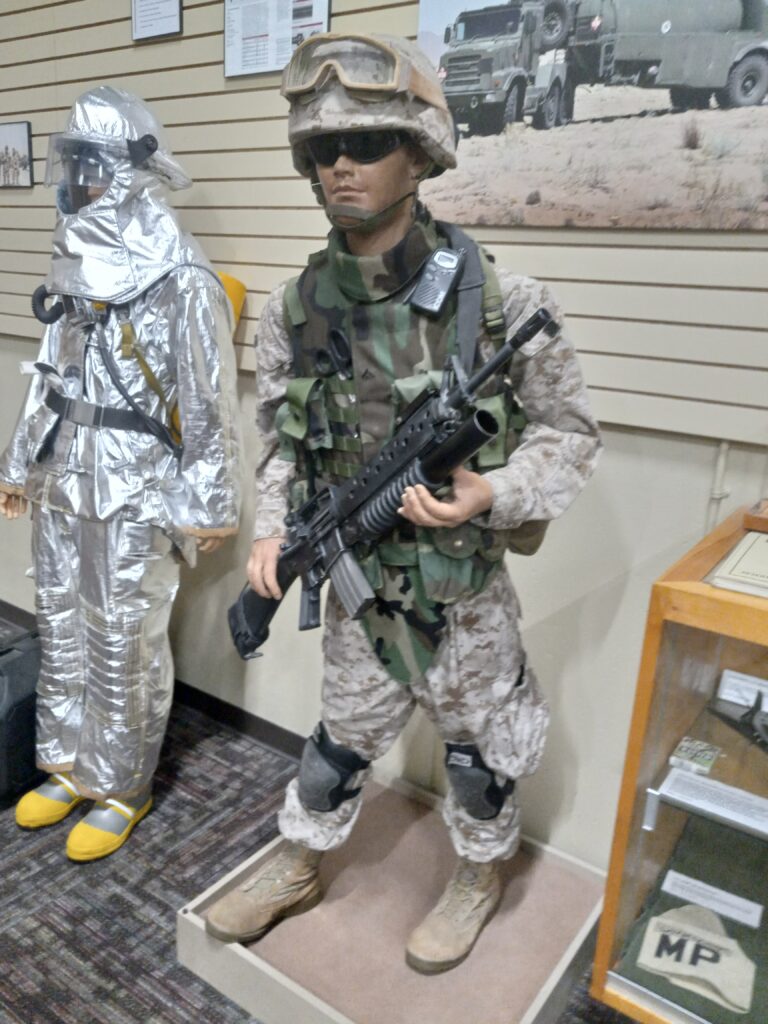A large percentage of the museum’s artifact collection consists of uniforms and accouterments, which has thousands of items we try to rotate through the museum on a regular basis. Be sure to stop to see our new displays!
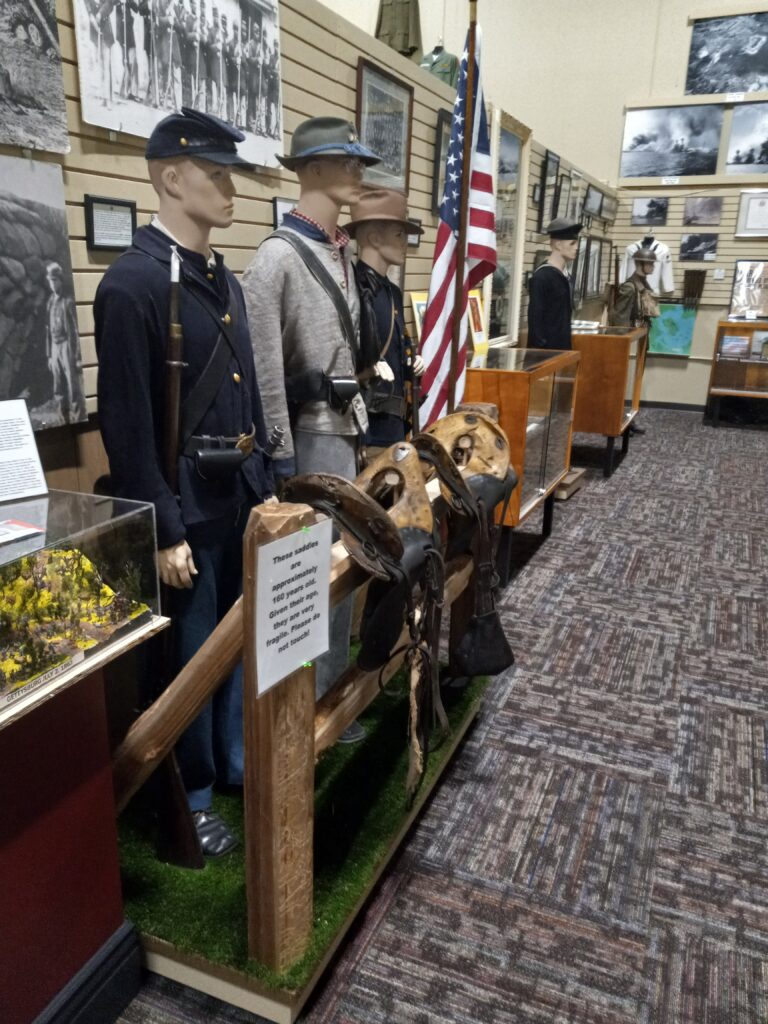
Uniforms range from the Spanish-American War of 1896 to current-day conflicts. Caps, belts, and cartridge boxes date back to the 1860s during the Civil War.
The bulk of our artifacts are from veterans of Wisconsin and surrounding states. Individual donations of veteran uniforms many times come with medals, ribbons, and military paperwork, which provides our tour guides with stories and details of the jobs they did to risk their lives to keep us safe at home.
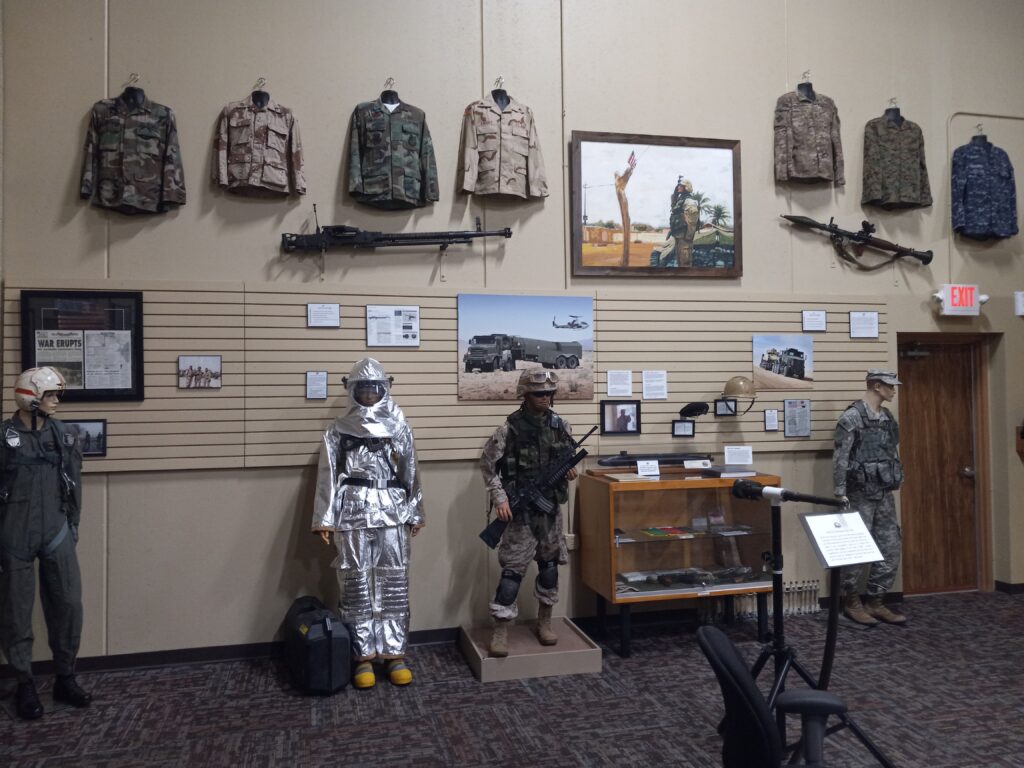
- U.S. Army Cavalry Sergeant’s sack coat from the Spanish-American War worn by B. Johnston, donated by Cecelia and Patrick Peterson.
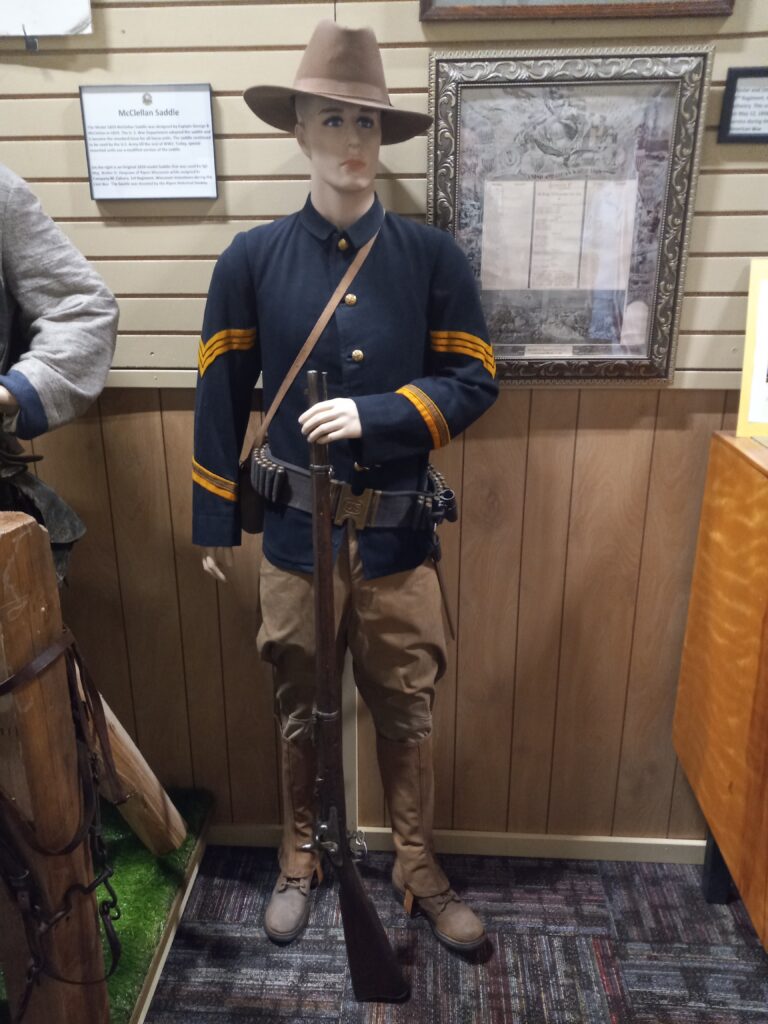
The Model 1859 McClellan Saddle was designed by Captain George B. McClellan in 1859. The U. S. War Department adopted the saddle and it became the standard issue for all horse units. The saddle continued to be used by the U.S. Army till the end of WW2. Today, special mounted units use a modified version of the saddle. On the right is an Original 1859 model Saddle that was used by Sgt. Maj. Walter O. Hargrave of Ripon Wisconsin while assigned to Company M. Calvary, 1st Regiment, Wisconsin Volunteers during the Civil War. The Saddle was donated by the Ripon Historical Society.
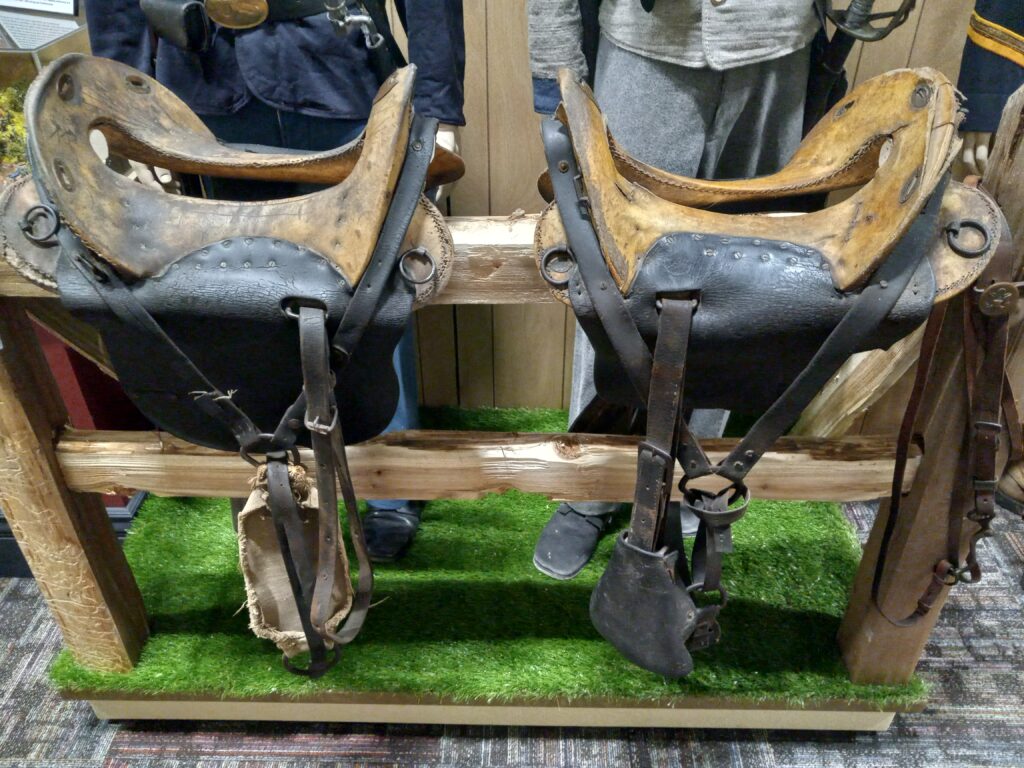
This World War I uniform was worn by Benjamin Ives of Kaukauna Wisconsin. Benjamin was a Corporal assigned to 5th Sanitary Trains, 5th Infantry Division (also known as the “Red Devils”). The role of the Sanitary Train was to provide medical care for the entire division through its ambulance and field hospital sections and Camp Infirmaries. The Ambulance Section consisted of a headquarters, one horse drawn and three motor ambulance companies. The 5th Division saw action in the Battle of Saint-Mihiel (12-15 Sept. 1918) and the Meuse-Argonne Offensive (Sept. 26, 1918 until the Armistice of Nov. 11, 1918). The Division was activated Dec. 1, 1917 and deactivated Oct. 4, 1921.
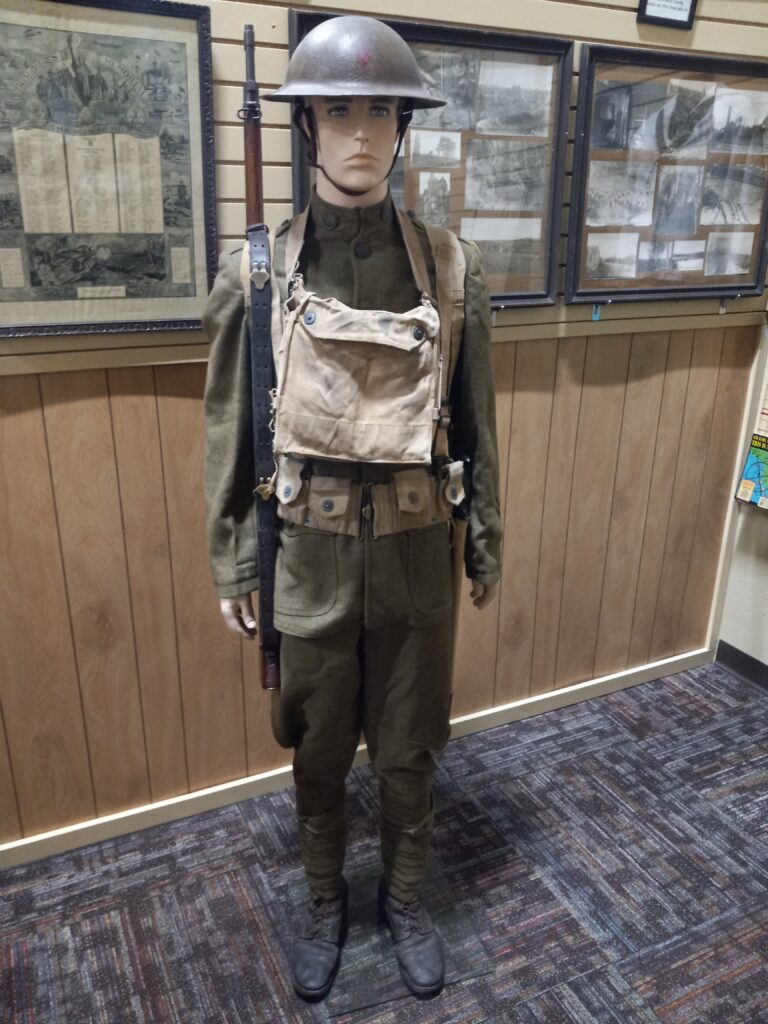
- PFC. Brent T. Vroman was a 2001 graduate of Omro High School who enlisted in the Marine Corps Reserve in Octovber, 2002. In March, 2003 he joined Fox Company, 2nd Battalion 24th Regiment, 4th Marine Division. On December 13, 2004, PFC Vroman, 21, sucumbed to wounds suffered in combat operations in Yusufiyah, Babil province, Iraq. This painting was based on a photograph taken of PFC Vroman as he saluted the US flag while serving in Iraq.
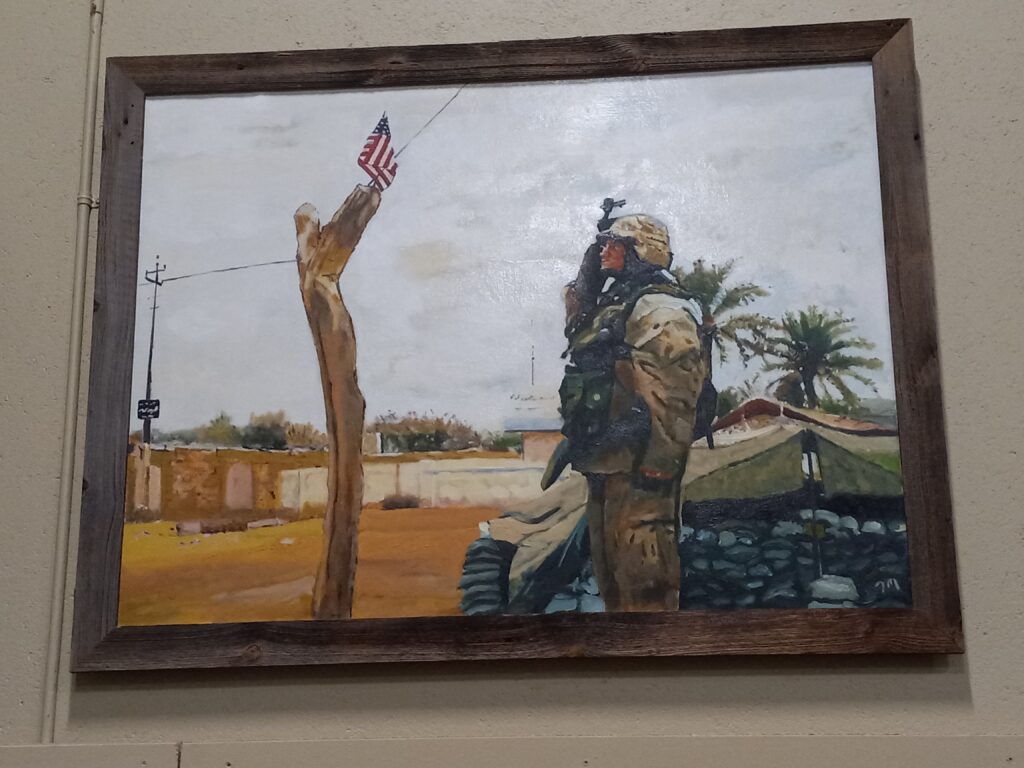
- Lance Corporal Daniel R. Wyatt had a strong desire to serve his country. He joined the Marines after his graduation from Racine Horlick High School in 2001. Daniel was assigned to Fox Company, 2nd Battalion, 24th Regiment, 4th Marine Division in Milwaukee. The 2nd Battalion was sent to the area around the town of Yusufiyah, Babil Province, Iraq known as the “Triangle of Death”. Corporal Wyatt was mortally wounded by an inprovised explosive device (IED). This mannequin closely resembles Corporal Wyatt and wears some of the items actually issued to him and returned to his family with his personal effects.
